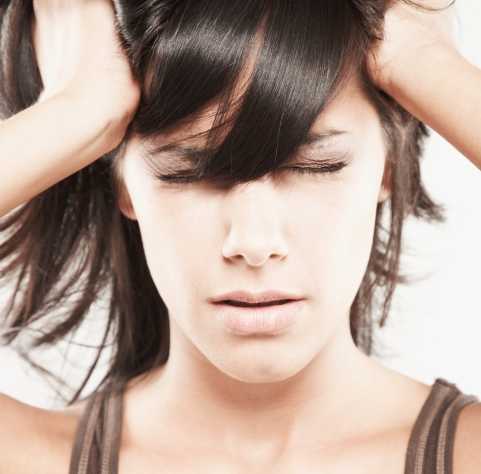Why Hair Loss Happens
The Role of DHT
There are many theories as to why hair loss happens. The most accepted explanation is that adrenogen receptors on hair follicles, where hairs actually grow from, get activated by a hormone called dihydrotestosterone. When these receptors are activated, the hairs grow more slowly and the hairs that do grow get thinner. Eventually, What little hair is left resembles "peach fuzz." Geneticists have found that four out of seven men and a little over half of women have the gene coding for DHT-sensitive androgen receptors.
Hair Loss Affects Men More
 |
Protein conformation of the androgen receptor with bound DHT molecule. |
For the most part, the gene coding for this version of the androgen receptor is on the x-chromosome. Men have an X-chromosome and a Y-chromosome while women have two X-chromosomes. This simply means that men are more likely to experience balding. You've probably heard the saying that baldness is inherited from your mother's side. In terms of genetics, this is true. Men are more likely to lose their hair because they only have one x-chromosome and if that one happens to have the DHT-sensitive androgen receptor then you're out of luck.
Blocking DHT
Beause when DHT binds to these receptors, the corresponding hair in the hair follicle shrunks and becomes less visible. Left untreated, the miniaturization of hair can progress until nothing is left but "peach fuzz." At that point, the only real solution would be expensive hair tansplant surgery.
This is why it is important to block the formation of DHT or its effects when you first notice thinning hair.
The Role of Circulation
Another reason why hair loss happens is poor blood circulation to the root of hairs. The synthesis of hair requires a lot of nutrients. Blood is the provider of required nutrients. If the roots of your hair do not have an ample supply of blood, hair follicles sop producing hair.
Loss of circulation can occur for many reasons. Old age causes deterioration in vascular tissue, tense muscles in the neck and forehead can constrict capillaries and prevent sufficient blood flow, stress can work with DHT to tighten the scalp.
 |
40% of hair loss sufferers are women! |
Hair Loss in Women
Hair loss in women is more rare since women have trace amounts of testosterone and even these minute amounts can be converted into hair loss inducing DHT. Commonly, women going through menopause experience hair thinning and loss. It is understood that during menopause, women stop ovulating because of erratic estradiol, testosterone, and estrogen levels. These erratic hormone levels can result in higher levels of testosterone that can then be converted in DHT.
In both men and women, the role of hormones in causing hair loss is clear. By understanding the causes of it, the solution is clear: stop DHT from being produced and or stop it from acting on hair follicles.